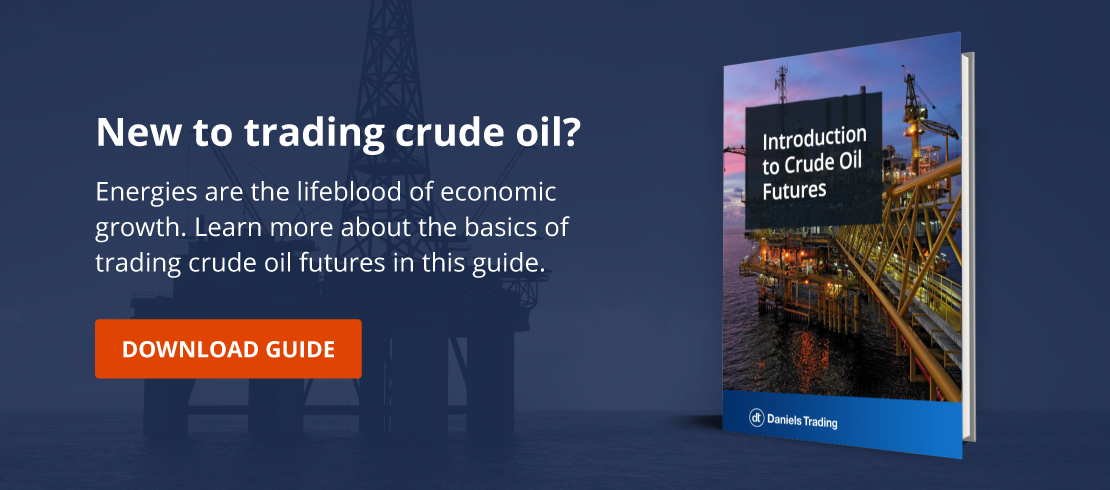According to the International Energy Agency (IEA), global demand for crude oil is expected to increase by 1 million barrels per day until the year 2025. If the IEA’s projections turn out to be accurate, then the supply side of the global energy complex will be placed under immense pressure. Given such a scenario, implementing strong oil hedging strategies will become essential for energy-sensitive businesses over the coming decade.
Energy Industry Overview
The energy industry is a diverse environment, comprised of various supply- and demand-side participants. Here are the primary sectors of the global energy complex:
- Drilling and exploration: Finding and tapping into oil resources is the backbone of the energy industry. According to the International Association of Drilling Contractors (IADC), there are more than 540 drilling-oriented companies in the US alone. Among the largest are Nabors Industries Ltd., Helmerich & Payne, Inc., and Patterson-UTI Energy, Inc.
- Service: Providing support services to drilling and oil field operations is a key element of the energy complex. Sealing wells, active fracking, and disaster aid are three specialties of service companies. Two of the world’s largest are Halliburton and Schlumberger.
- Logistics: Transportation and storage are integral parts of the oil industry. Whether it’s by tanker, rail, pipeline, or truck, delivering raw crude oil to refiners and consumers is an essential facet of the industry. Energy Transfer Equity (US), Enterprise Products Partners (US), Australian Pipeline Trust (AUS), and Enbridge (Canada) are leading energy logistics companies.
- Refinement: Oil refiners are responsible for delivering viable fuel sources to the public for large-scale consumption. Gasoline, diesel, and heating oil are three of the most common products. ExxonMobil, Marathon Petroleum Corporation, and Saudi Aramco are several globally prominent refining companies.
- Consumption: Many different types of industries consume refined fuels to sustain operations. Companies ranging from American Airlines to Archer Daniels Midland have an interest in the pricing of crude oil and refined fuels.
The energy complex plays a major role in the global economy. As an illustration of scale, the American Petroleum Institute (API) estimates that the oil and gas industry accounts for nearly 8 percent of US gross domestic product. This is a significant figure, and one that is typically higher in many other leading and developing nations. Subsequently, a variety of institutional participants frequently turn to futures to manage risk via oil hedging strategies.

Hedging Risk Courtesy of Oil Futures
For many businesses, fluctuating oil prices exponentially enhance operational costs and risks. A sudden plunge in the value of crude oil can bankrupt drillers, while an unexpected spike can pressure consumers. One of the tried-and-true ways of managing this risk is to implement oil hedging strategies with futures.
In practice, two futures contracts are regularly used to hedge against the negative impacts of oil pricing volatility:
- West Texas Intermediate (WTI) crude oil: Listed on the Chicago Mercantile Exchange (CME), WTI futures are viewed as being the global benchmark for oil valuations.
- North Sea Brent (Brent) crude oil: Available for trade on the Intercontinental Exchange (ICE), Brent futures offer participants access to the North Sea oil market. Brent is typically thought of as the international measure of oil’s value.
To illustrate a basic oil hedging strategy, assume that the top brass at Halliburton (HAL) is concerned that a severe downturn in crude oil pricing may develop over the coming 18 months. A massive sell-off would be detrimental to HAL’s bottom line because its P&L relies heavily on revenues generated from the support of North American fracking operations. Such a downturn would very likely result in a swift consolidation of fracking enterprises.
To address these concerns, HAL could sell large blocks of WTI and Brent contracts with an expiration date one year out. If the oil markets did crash, HAL would realize gains from the outstanding shorts. Although the company’s stock price may still suffer, losses realized from lagging operational revenues wouldn’t be nearly as severe.
Oil Hedging Isn’t Just for Industry Heavyweights
The likes of ExxonMobil, Chevron, and Halliburton regularly practice advanced oil hedging strategies, but these strategies aren’t just for elite corporations. In fact, small businesses in the transportation, agriculture, and travel industries also participate often.
If you’re involved in an energy-sensitive industry, then hedging with crude oil futures may be a great way to manage your risk. To learn more, take advantage of your free one-on-one consultation with a Daniels Trading market professional today.

